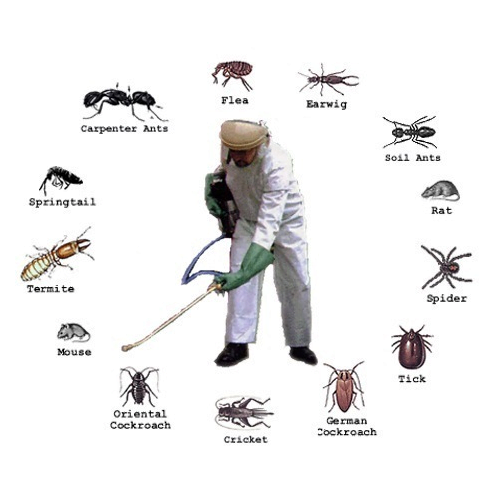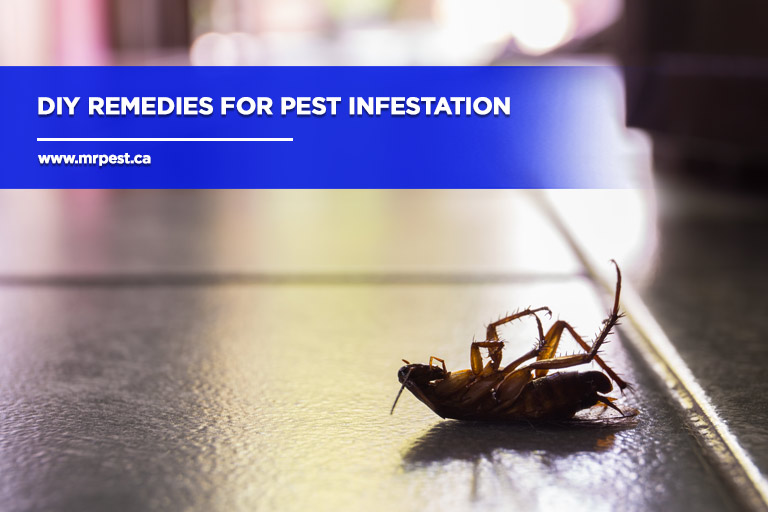Effective Coquitlam Pest Control Solutions for a Pest-Free Environment
Effective Coquitlam Pest Control Solutions for a Pest-Free Environment
Blog Article
Safe and Reliable Bug Control for Lasting Protection
Effective bug management requires a complex approach that balances ecological honesty with the demand for efficient pest suppression. The subtleties of these techniques may not be instantly clear, prompting a more detailed assessment of the methods that can lead to sustainable parasite control results.
Understanding Parasite Control Techniques
Pest control incorporates a range of methods targeted at managing and eradicating unwanted pests and rodents that can intimidate both wellness and property. Recognizing these methods is crucial for efficient pest administration.
The primary classifications of pest control techniques include mechanical, biological, and chemical methods. Mechanical methods include physical obstacles and traps to avoid pest access and capture undesirable species. For example, making use of screens on home windows or using sticky traps can considerably reduce insect populaces without introducing damaging substances.

Chemical pest control is typically one of the most acknowledged technique, using pesticides to get rid of insects. These chemicals can be efficient however need to be made use of with care to prevent adverse effects on non-target species and the setting.
Advantages of Eco-Friendly Solutions
Exactly how can environmentally friendly remedies transform bug control practices? The fostering of eco-friendly bug control methods offers many advantages, substantially boosting the efficiency and safety and security of bug management.

An additional advantage is the positive effect on neighborhood biodiversity. Environment-friendly options are designed to target details insects while preserving helpful pests and wildlife, promoting a balanced community. This method lines up with the growing consumer need for lasting methods, improving the track record of bug control service providers.
Integrated Insect Management Techniques
The implementation of environmentally friendly services naturally leads to the adoption of Integrated Bug Monitoring (IPM) approaches, which better boost bug control effectiveness. IPM is a holistic approach that integrates multiple tactics to take care of bug populations while minimizing ecological impact. This technique emphasizes using organic, cultural, mechanical, and chemical controls, ensuring a well balanced and lasting method of pest monitoring.
One essential aspect of IPM is the thorough evaluation of pest task and environmental problems. By keeping track of bug populaces and recognizing their life process, specialists can apply targeted interventions that disrupt the bug's habitat or lifecycle, minimizing reliance on chemical pesticides. In addition, cultural methods such as crop turning and environment control can considerably diminish bug establishment and reproduction.
An additional important component is making use of biological control agents, such as useful insects or bacteria, which can normally suppress parasite populations. When chemical applications are essential, IPM prioritizes making use of low-risk chemicals and applies them precisely, minimizing exposure to non-target microorganisms and humans.
Integrating IPM methods not just improves bug control effectiveness however likewise advertises a more secure community, lining up with the expanding demand for lasting techniques in insect administration.
Safe Practices for Home Owners
Understanding the significance of risk-free methods in pest control can empower property owners to properly take care of pest issues while guarding their wellness and the setting. Executing safe methods and precautionary procedures is crucial in minimizing exposure to hazardous chemicals.
Home owners must first evaluate their environment for problems that draw in insects, such as standing food, water, and mess waste. On a regular basis cleansing and securing entrance factors can prevent insects site web from invading the home. Making use of natural deterrents, such as important oils or diatomaceous earth, can give efficient alternatives to chemical pesticides.
When chemical therapies are required, homeowners must choose items that are especially classified as secure for domestic usage. It is necessary to adhere to application standards carefully to stay clear of overexposure. In addition, utilizing targeted therapies in areas where parasites are recognized, as opposed to covering spraying, can considerably decrease chemical additional info usage.
Finally, maintaining open interaction with pest control experts is important. Homeowners must make inquiries about the security of items utilized and request environment-friendly options whenever feasible. By adopting these safe techniques, house owners can develop a healthier living environment while successfully taking care of pest concerns.

Tips for Long-Term Protection
Establishing a bug monitoring technique that highlights lasting defense can substantially enhance the effectiveness of the safe practices formerly reviewed. To attain this, home owners should implement regular inspections of their home, concentrating on hidden areas such as attics, cellars, and crawl rooms. Early discovery of bug task is vital in stopping invasions from taking hold.
These techniques minimize attractants that draw parasites into the home. Securing entrance points, such as fractures around doors and home windows, can efficiently obstruct potential parasite access.
Landscape design ought to additionally be thought about; maintaining plants trimmed and keeping a distance in between vegetation and the home minimizes concealing spots for bugs. Utilizing natural deterrents, such as essential oils or diatomaceous earth, can better dissuade infestations without considering severe chemicals.
Last but not least, working together with a specialist pest control service for routine evaluations can give an extra layer of safety. These specialists can provide customized referrals and advanced therapies, making find out here sure that your home continues to be safeguarded against parasites in the long term.
Conclusion
Finally, trustworthy and secure pest control requires a diverse technique that stresses environmentally friendly techniques and integrated bug administration. By implementing natural deterrents, conducting regular evaluations, and preserving appropriate sanitation, homeowner can substantially minimize bug populaces while securing valuable pests and the environment. Collaboration with specialist parasite control services enhances the performance of these approaches, ensuring tailored solutions that supply lasting protection and peace of mind against future infestations.
Efficient bug management needs a complex method that balances ecological stability with the demand for effective parasite suppression. The fostering of eco-friendly insect control methods provides various benefits, significantly boosting the performance and safety of insect management.The implementation of environment-friendly services naturally leads to the fostering of Integrated Insect Management (IPM) approaches, which additionally enhance pest control efficacy. exterminator coquitlam. By monitoring bug populations and recognizing their life cycles, professionals can implement targeted treatments that disrupt the parasite's environment or lifecycle, lowering reliance on chemical pesticides.In verdict, risk-free and reliable bug control requires a multifaceted approach that highlights eco-friendly techniques and incorporated insect administration
Report this page